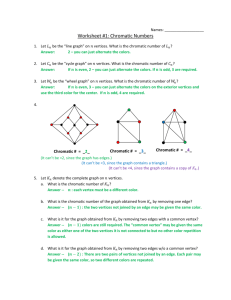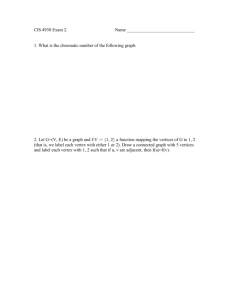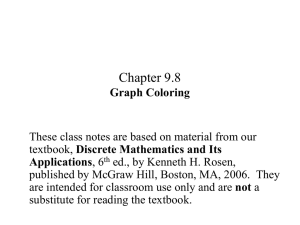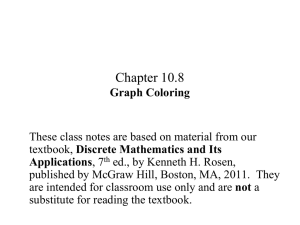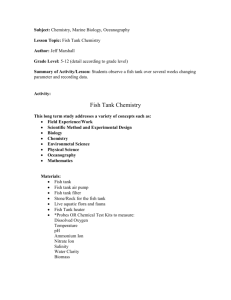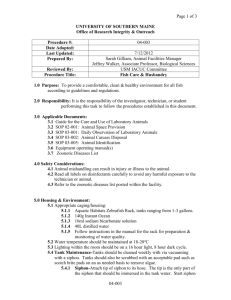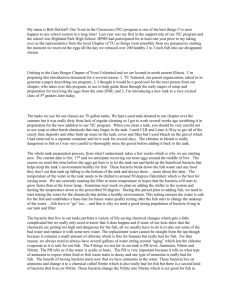Day 1 - Vertex Coloring
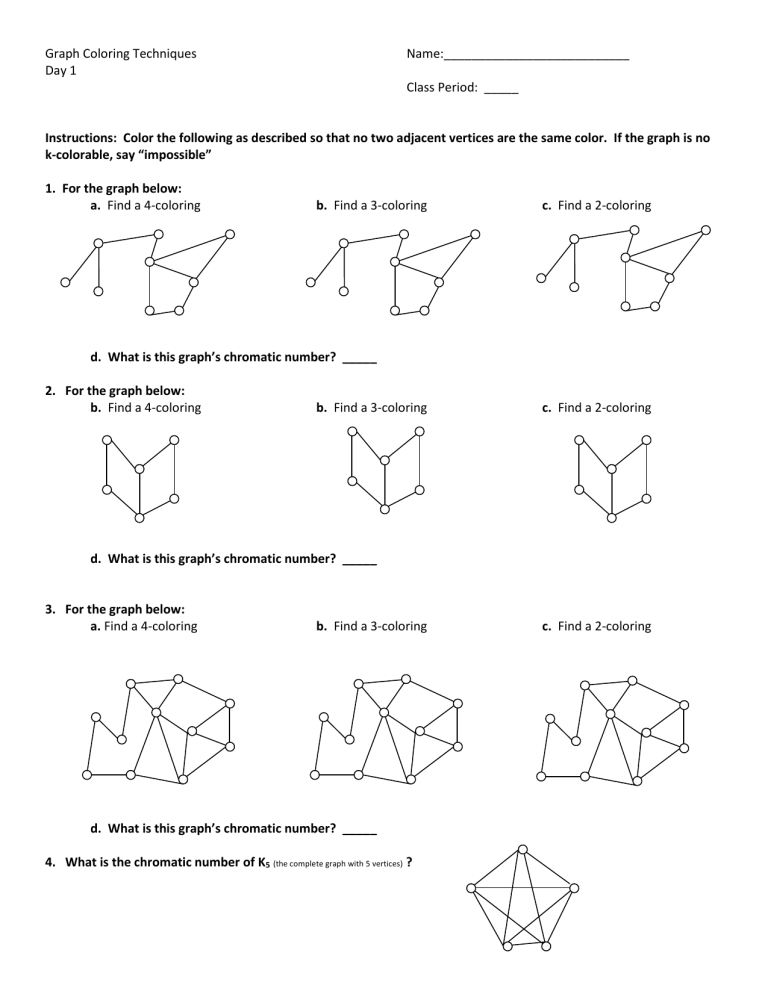
Graph Coloring Techniques
Day 1
Name:___________________________
Class Period: _____
Instructions: Color the following as described so that no two adjacent vertices are the same color. If the graph is no k-colorable, say “impossible”
1. For the graph below:
a. Find a 4-coloring b. Find a 3-coloring c. Find a 2-coloring d. What is this graph’s chromatic number? _____
2. For the graph below:
b. Find a 4-coloring b. Find a 3-coloring d. What is this graph’s chromatic number? _____
c. Find a 2-coloring
3. For the graph below:
a. Find a 4-coloring b. Find a 3-coloring d. What is this graph’s chromatic number? _____
4. What is the chromatic number of K
5 (the complete graph with 5 vertices)
?
c. Find a 2-coloring
5. What is the chromatic number of the following tree?
6. What is the chromatic number of this circuit? 7. What is the chromatic number of this circuit?
8. A tropical fish hobbyist had six different types of fish: Alphas, Betas, Certas, Deltas, Epsalas, and Fetas, which shall be referred to from here on as A, B, C, D, E, and F, respectively. Because of predator-prey relationships, water conditions, and size, some fish cannot be kept in the same tank. The following table shows which fish cannot be together:
Type A B C D E F
Cannot be with B,C A,C,E, A,B,D,E C,F B,C,F, D,E
Draw a graph to represent this situation. Let the vertices be the fish and the edges represent fish that cannot be in the same tank.
Determine (using graph coloring) the fewest number of tanks needed to house these fish. Then specify which fish should be in which tanks.
Number of tanks needed: _______
Tank 1: _________
Tank 2: _________
Tank 3: _________
Tank 4: _________
Tank 5: _________
Tank 6: ________
(cross off the tanks you don’t need)


